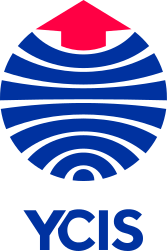Go Back
News
News
Eight Great Ways to Encourage Your Child’s Artistic Talent
News
10 Feb, 2017
10 : 00
At the Yew Chung International School of Beijing, art is one of the key pillars of the school’s curriculum. Integration of this core subject begins as early as Year 1 in Primary School, where children engage in a variety of painting, drawing, sculpting, crafting, and much more, receiving a variety of benefits. Our Primary Art teacher Johan Swart has been with the school for nine years (and counting). He explains why art is vital for a young child’s development, even if they’re not going to be the next Picasso!
Please introduce yourself.
My name is Johan Swart. I’m originally from South Africa where I got my HDE at the University of Stellenbosch and FDE at the University of Cape Town. I’ve been teaching for over 30 years in various cities around the world, with nine years now at the Yew Chung International School of Beijing teaching Primary and Secondary School art.
What inspired you to become an art teacher?
I have a desire to pass on the joy of creating art to others. The excitement that goes along with discovering the new ways that art production can be integrated with other courses of study is intriguing to me. I personally have always loved art. As a young person, I was lucky to have a family of artists who supported my exploration of many art-related extracurricular activities.
What are the benefits that visual arts classes bring to students at a young age?
For the brain to be efficient, the two hemispheres of the brain must work together. By stimulating and exercising the right hemisphere of the brain, the arts strengthen the connection between the hemispheres. Children should be exposed to the arts as their cognitive skills mature so that their right brain will be as developed as the left. When both hemispheres work in tandem, the brain achieves its full potential.
How can visual arts help students to excel in other academic areas in school?
In addition to proficiency in the subject, the visual arts imparts a wide variety of “soft skills” in students, including:
Creativity - Being able to think on your feet, approach tasks from different perspectives and think ‘outside of the box’ will distinguish your child from others. If children have practice thinking creatively, it will come naturally to them now and in their future career.
Problem Solving - Artistic creations are born through the solving of problems, e.g. “How do I turn this clay into a sculpture?”
Perseverance – Children know through questions and discussion they can change their projects as many times as they want. In an increasingly competitive world, where people are being asked to continually develop new skills, perseverance is essential to achieving success.
Focus - The ability to focus is a key skill developed through ensemble work. Keeping a balance between listening and contributing involves a great deal of concentration and focus. It requires each participant to not only think about their role, but how their role contributes to the big picture of what is being created.
The Ability to Receive Constructive Feedback - Receiving constructive feedback about a visual art piece is a regular part of any arts instruction. Children learn that feedback is part of learning and it is not something to be offended by or to be taken personally. The goal is the improvement of skills and evaluation is incorporated at every step of the process.
Collaboration - Most arts disciplines are collaborative in nature. Through the arts, children practice working together, sharing responsibility, and compromising with others to accomplish a common goal.
Dedication - When kids get to practice following through with artistic endeavors that result in a finished product or performance, they learn to associate dedication with a feeling of accomplishment.
Accountability - When children practice creating something collaboratively, they get used to the idea that their actions affect other people. Through the arts, children also learn that it is important to admit that you made a mistake and take responsibility for it. Because mistakes are a regular part of the process of learning in the arts, children begin to see that mistakes happen. We acknowledge them, learn from them and move on.
What are the strengths of YCIS Beijing’s Primary School art programme?
Through our visual art programme our students gain an understanding and appreciation of cultural diversity. Our art programme equips students with the knowledge and skills to stimulate cognitive development and to encourage innovative and creative thinking.
In particular, YCIS Beijing’s Primary School art programme focuses on the development of the following, many of which are directly tied to the “soft skills” mentioned above:
Motor Skills: Many of the motions involved in making art, such as holding a paintbrush or scribbling with a crayon, are essential to the growth of fine motor skills in young children.
Language Development: For very young children, making art—or just talking about it—provides opportunities to learn words for colors, shapes, and actions.
Decision Making: The experience of making decisions and choices in the course of creating art carries over into other parts of life.
Visual Learning: Drawing, sculpting with clay, and threading beads on a string all develop visual-spatial skills.
Inventiveness: When kids are encouraged to express themselves and take risks in creating art, they develop a sense of innovation that will be important in their adult lives.
Cultural Awareness: Teaching children to recognize the choices an artist or designer makes in portraying a subject helps kids understand the concept that what they see may be someone’s interpretation of reality.
Please give some examples of simple, fun, and non-resource intensive art projects that parents can do with their children at home.
There are many, but I’ve included a few ideas below:
1. Create a scrapbook together. Put photos, memorabilia, drawings, and captions together creatively. In doing so, you will not only have a shared experience but a memory that will last for many years (if you use acid-free paper).
2. Put together an “art studio” in your home. Stock it with a variety of tools and materials: crayons, markers, finger paints, scissors, pastels, watercolors, brushes, glues, papers of various sizes and textures, intriguing found objects, leftovers from your own home improvement, boxes and containers of all sizes.
3. Create a home art gallery for your child’s artwork. A kitchen wall or pin board is ideal for sticking up pictures and paintings. You could ask your child to choose one special painting each week to frame in the centre of the gallery. This shows that you value your child’s creations.
4. Personal Wordless Picture Book: Let your child draw some pictures, collect them in a binder, and encourage him/her to make up stories about each picture.
5. Feet Painting: Spread butcher paper on the floor. Put some washable paint in a shallow pan, and let your toddler use his feet to paint.
6. Non-Traditional Painting: Give your toddler a few non-traditional items, such as a clean deodorant roller bottle, toothbrush, Q-tip, and a flyswatter, and let them paint with each one of the items.
7. Child Mural: Line an entire wall with butcher paper and tape it securely in place. Give your child a crayon, paint, or oil pastels, and let them draw to their heart’s content.
8. Food Collage: Gather dry food items such as cereal, popcorn, and macaroni noodles. Let your toddler glue the food on a piece of card stock to create a masterpiece.












